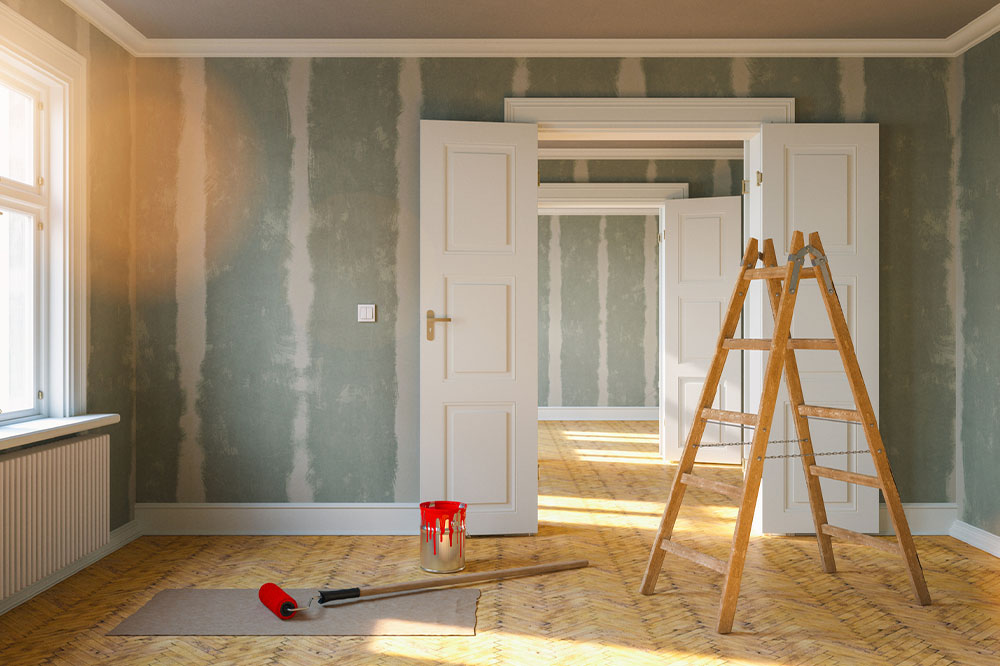
7 home renovation mistakes homeowners should avoid
Home renovation is a significant task and investment for homeowners. Typically, homeowners have several innovative ideas for ensuring a new look and feel to their homes. However, the end-to-end renovation process requires them to understand their home needs, research current interior design trends, and know their budget limits before proceeding with the activity. Moreover, being aware of some common renovation mistakes can help homeowners make the best decisions and facilitate an esthetic home:
Not opting for good-quality materials
Choosing materials of substandard quality may be an affordable option, but it can cause homeowners to incur huge repair expenses in the long run. Superior-quality renovation materials are durable and do not have to be replaced for long periods. Therefore, it is advisable to check out brands offering home-renovation materials and their prices and opt for the ones that perfectly integrate quality with affordability.
Not knowing one’s budget range and limit
Home renovation typically entails expenses for various activities, including flooring, plumbing, whitewashing or painting, purchasing new furniture, and decorating the home with showpieces and artifacts. Setting a budget range is essential to ensure that one can be prepared with the required amount and does not end up overspending. Homeowners must curate a list of home-renovation activities to be carried out so that a definite cumulative budget can be set accordingly.
Purchasing furniture too early
It is ideal for homeowners to purchase furniture only after the project plans have been finalized and accurate measurements have been taken. Buying furniture before this stage can result in the wrong quantities or dimensions of furniture pieces. It is ideal to purchase new furniture only after the renovation activities have been planned extensively and accurate measurements have been taken.
Overlooking function for esthetics
Another common renovation mistake homeowners make is to focus excessively on esthetics, to the extent of overlooking functionality. The best homes are the ones that strike the perfect balance between utility and esthetics. Every furniture piece and equipment bought for the home must serve a distinct purpose; if not, it classifies as clutter and should not be purchased.
Not hiring a reliable professional
Many homeowners appoint professional interior decorators and architects to renovate their homes. Hiring a professional can help one avail of much-needed guidance and prevent mistakes. However, verifying such professionals’ credentials is crucial, looking for online reviews and testimonials and checking with family members, friends, and neighbors to determine their credibility. In addition, discussing one’s home renovation requirements and ideas with the chosen decorators and architects is a good idea to gauge their knowledge and competence.
Not consulting a general contractor
A general contractor plays an integral role in supervising the renovation project and ensuring its timely completion. Such contractors also hire and coordinate with the professionals involved, ensuring all the required resources are available. It is important to consult a reliable general contractor at the project’s nascent stages to avoid confusion and chaos and receive timely guidance.
Making too many unnecessary changes
While changes are part and parcel of every endeavor, it takes additional time and effort to carry them out along the way. Hence, homeowners must evaluate any suggested changes carefully, understanding their necessity and prioritizing crucial changes over secondary or avoidable ones.
While getting the home renovated, it may be a good idea to examine the strength of the foundation. Upon detecting any issues here, it is important to avoid making mistakes with foundation repair, such as rushing the concrete curing process, planting trees too close to the foundation, and failing to maintain the correct moisture level. Avoiding such mistakes can help in maintaining a damage-free foundation.












